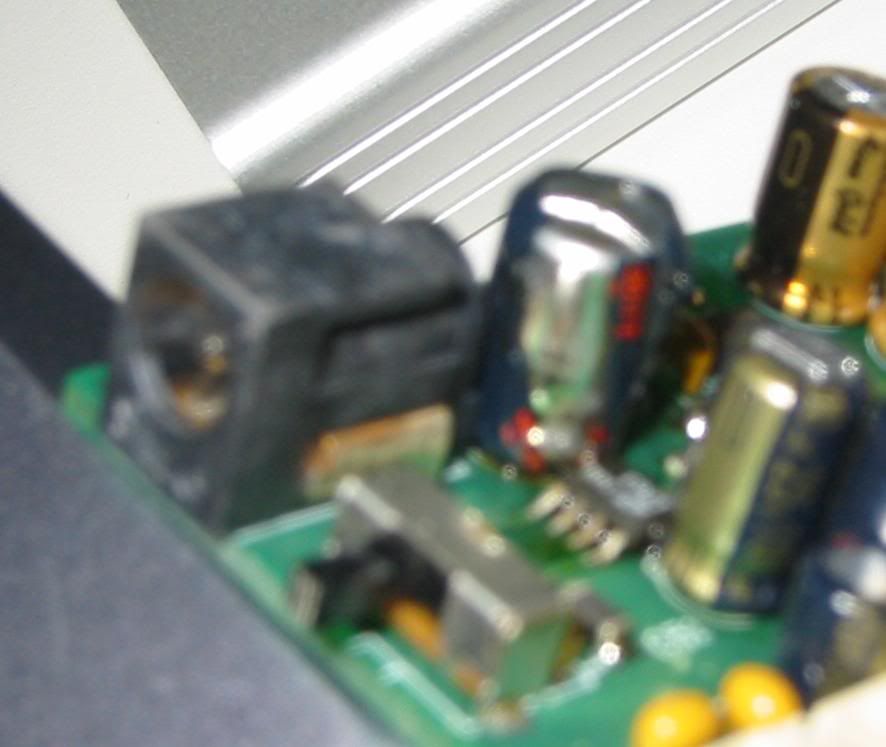Zoide
Headphoneus Supremus
- Joined
- May 2, 2004
- Posts
- 3,094
- Likes
- 182
So... I was doing some things with my AC adaptor, and switched the polarity....
Then I plugged it into the Piccolo...


(sorry for the blurry pics.. don't want to reopen the smelly thing to take them again!)
And now a capacitor blew up, and I'm left with a nasty smell, some cancerigenous fluid, and a broken source

Does anyone know if the broken capacitor's replacement can be found at some place like Radio Shack? I'm in Costa Rica right now and it's not as easy as just ordering from Digikey or something like that.
Do I just de solder at the bottom of the board to remove the capacitor and then put a new one in and solder it at the bottom to fix it in place again?
Thanks,
Andrés
Then I plugged it into the Piccolo...


(sorry for the blurry pics.. don't want to reopen the smelly thing to take them again!)
And now a capacitor blew up, and I'm left with a nasty smell, some cancerigenous fluid, and a broken source

Does anyone know if the broken capacitor's replacement can be found at some place like Radio Shack? I'm in Costa Rica right now and it's not as easy as just ordering from Digikey or something like that.
Do I just de solder at the bottom of the board to remove the capacitor and then put a new one in and solder it at the bottom to fix it in place again?
Thanks,
Andrés




